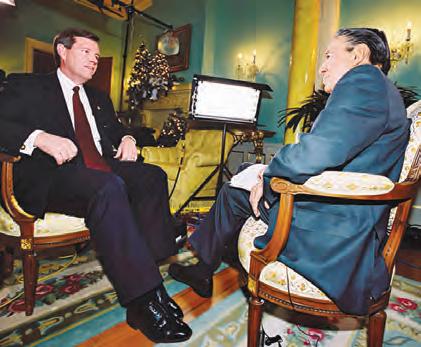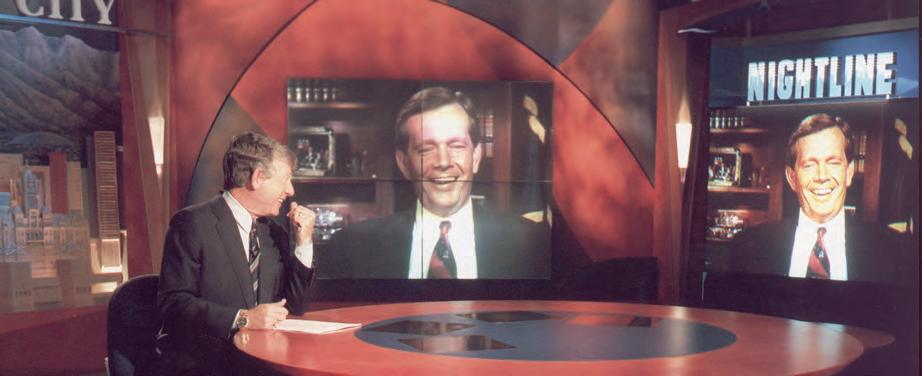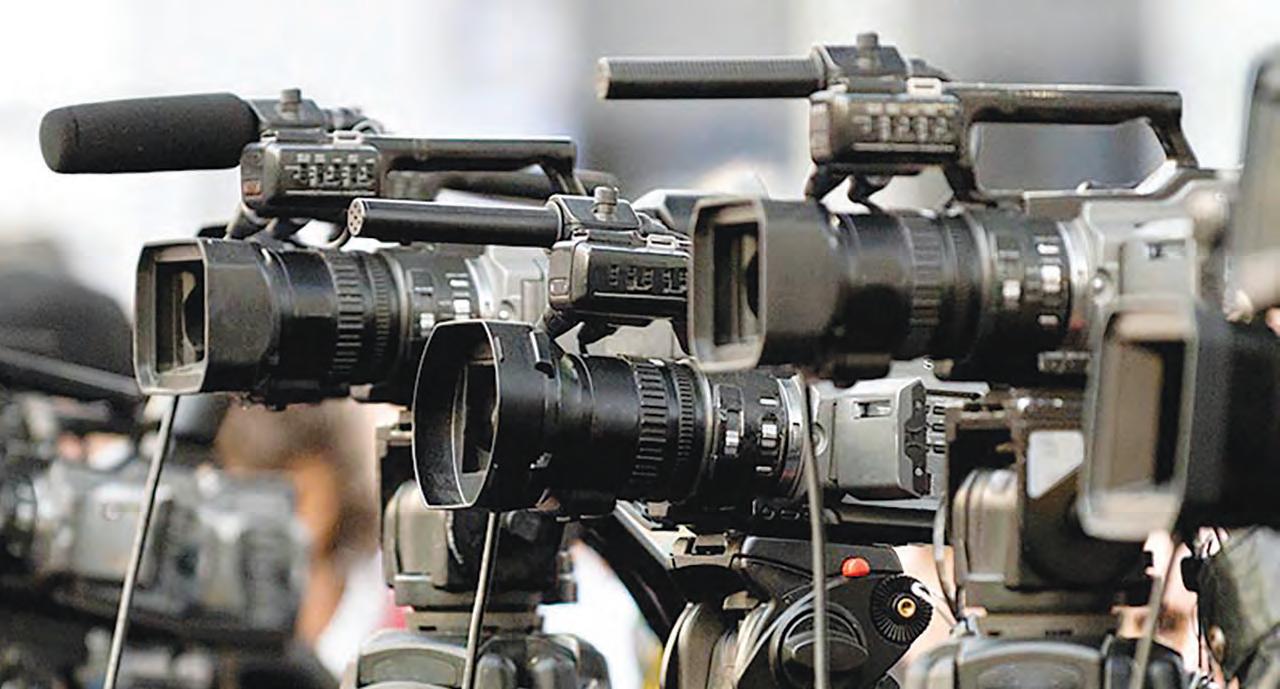
17 minute read
Chapter 9
from Real and Right
The Media
Anyone who has ever clashed with the news media would understand the old adage from Mark Twain: “Never pick a fight with people who buy ink by the barrel.” It is a warning that speaks to the role of the press as monolithic, antagonistic, and influential. For better or worse, news organizations have the ability to reach millions of people and shape public opinion.
Thanks to the internet and social media, everyone has “ink.” The news industry has experienced seismic changes over the past couple decades that have disrupted its business models, standards, and guiding precepts. Development of the internet was the most tectonic, and this transformation coincided with my time in public service. Hence, I want to describe how interactions with the media were conducted during the period of my service as governor, even though I fully understand it is different now.
Our nation’s founders understood that an independent press was a vanguard against corruption and unchecked power, and so they enshrined freedom of the press in the First Amendment of the Constitution. We’ve upheld that freedom as a nation ever since, throughout wars, cultural upheavals, and other periods of crisis and high tension.
The Watergate scandal that toppled President Richard Nixon was a zenith for the press. Practitioners of the journalistic craft saw themselves as intrepid, uncompromised seekers and arbiters of The Truth. Detached from partisanship or ideology, only they could fix an impartial eye on government and the powerful and hold them accountable—or so they believed.
Over time, news organizations have become powerful themselves, as well as partisan and increasingly similar in thought, assuming a mantle of moral superiority over those they cover. Today, many are unmistakable advocates or propagandists, and the plummeting numbers for public trust in the media reflect that decline. Truth and objectivity, once the righteous foundations of the profession, became redefinable, even expendable. Free speech, the essential right ensuring the profession’s existence, is situational now—it depends on who is doing the speaking. Astonishingly, it is the press itself that now seeks to censor and silence dissenting voices.
A number of news reporters are undoubtedly still honest people doing their best. It is others who have diminished and sometimes debased the entire industry. The other problem is that the national press does not know the America outside its coastal enclaves, yet hometown news organizations have struggled to stay in business or cater to a shrinking reader or viewer base.
Local “old-school” reporters such as Rod Decker, Lee Davidson, and Lois Collins epitomized the justthe-facts workhorse tradition and banked enormous reservoirs of respect and trust. That class of journalists is dwindling as more and more reporters take sides, whether for an ideology, a party, or a narrative. This trend is not entirely about the character of people doing the reporting; it reflects a change in the audience. Today’s journalistic audience rewards the behavior, and hence news organizations fill the demand.
There were indicators of that when I was in office, although the industry’s professional standards and codes of ethics still held sway and could rein in blatant partisanship or egregious bias. Objectivity, however, was the first casualty of all the change.
Covering the Governor
I regularly crossed paths with those who chose journalism as a calling to serve the public as a watchdog. Others liked the action or the influence the profession afforded them. Some truly believed they were “speaking truth to power,” as another of the industry’s tropes—purloined from the Quakers—goes.
Regardless of ideology, I’ve found that I am generally treated better by people I treat well. This is true of the media. I realized early on that part of my job as governor was to make their job easier. They needed stories; we needed them to tell our story. It was as simple and symbiotic as that.
Our general policy was to provide the media with easy access, particularly the reporters covering us daily. I’m confident I did an average of three or four news interviews every day, probably ten thousand in total during my time as governor. Some days, there could literally be fifteen or twenty interviews, depending on whether a hot issue or event was unfolding. A very high percentage of my time was spent with media folks. We organized our office to be respectful of their deadlines. Not just because we were nice, but because it was in our mutual interest.
There is a subset of the media which is overtly hostile, usually as a result of opposing ideological agendas. To the degree I was able to avoid them, I did. It was better for my outlook. To the extent I couldn’t, I have found navigating those relationships with skill and care is necessary. Learning how to find the balance between overreacting and demonstrating we would not be pushed too far was a learning process. Vicki Varela, a former journalist who managed these relationships, was constantly refining our approach. It was all part of the world we were in, and that included interactions and coverage that struck us as completely unwarranted or unfair.
Just one example would be useful in describing the interplay that happened daily. During my first year as governor, KTVX television reporter Chris Vanocur asked one day for a one-on-one interview. I did it sitting at my desk in the ceremonial office. Minutes into it, Vanocur was off and running in a direction other than what he claimed as his subject to secure the interview. It was an ambush, with him asking misleading questions about a campaign supporter and friend of mine. Caught by surprise, I don’t recall handling it very well. I was angry, embarrassed—and on camera the whole time.
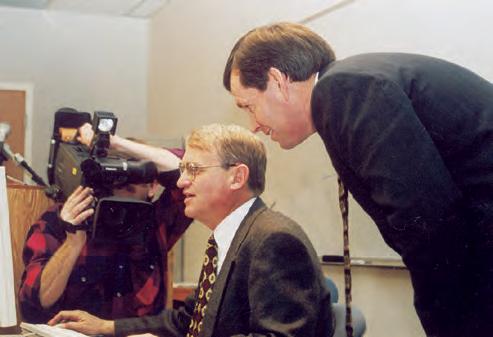
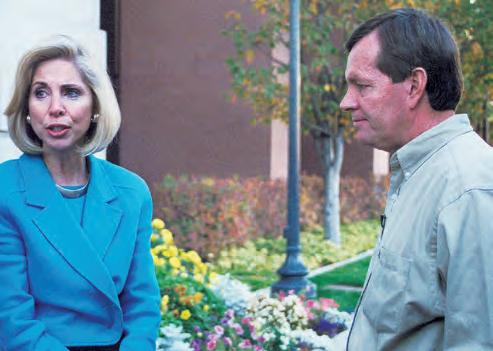
I declared Chris persona non grata in our office afterward and refused further interviews for a time. He, in turn, did a story about being shut out of the Governor’s Office. The second story we deserved; the first one we didn’t. Neither of us benefited from this stalemate. Chris might have felt it burnished his intrepid newsman persona, although the professionals in the business look down on contrivances that make the reporter the story. For me, the episode had turned into a mini drama not worth the governor’s time, but I learned important lessons.
I declared Chris persona non grata in our office afterward and refused further interviews for a time. He, in turn, did a story about being shut out of the Governor’s Office. The second story we deserved; the first one we didn’t. Neither of us benefited from this stalemate. Chris might have felt it burnished his intrepid newsman persona, although the professionals in the business look down on contrivances that make the reporter the story. For me, the episode had turned into a mini drama not worth the governor’s time, but I learned important lessons.
Ultimately, I invited Chris up to the office to talk it through. I told him that I thought the first interview was unfair and that he did not need to ambush me. If he had a hard question, he should ask it. In retrospect, this is one I should have left to Vicki Varela. I allowed myself to get too caught up in the irritation.
Deputy of Communications
Vicki was excellent in managing these situations. She was calm but took no nonsense from reporters. They respected and liked her. She knew their business, having come from it herself, and also knew their bosses. As a matter of policy, we rarely called editors or publishers, but it was important that reporters knew we could. They also knew they needed a relationship with Vicki to do their jobs successfully. I came to understand how fortunate I was to have Vicki in that position.
Vicki held the role of deputy for communication through the first term and picked up additional duties as a deputy chief of staff during the second term. She left to become a partner in a public relations firm, later joined Kennecott Land, and went on to head the Utah Office of Tourism.
For roughly a year after Vicki left, her deputy Therese Anderson assumed the role of press secretary. Therese had a unique capacity to write in my voice. She moved to Australia and married, and the deputy position opened up again.
On the face of it, an economist from the State Office of Planning and Budget would not be the most conventional candidate to take over as spokesman and communications director. Natalie Gochnour, however, turned out to be an inspired choice.
Natalie grew up with brothers and is an exceptional athlete. Each year, the legislature would challenge the Governor’s Office during the session to a basketball game. While it was all in fun, it always turned into a more serious effort once the game started. Natalie could play, and she first caught my eye not as an economist but as a basketball player.
We had enough meetings that I knew she was also a thoughtful professional. I had been asked to appear on a one-hour television show to discuss a series of issues I didn’t feel well prepared to discuss, so I asked Vicki to arrange someone from the Planning and Budget Office to go with me to the program.
Never pick a fight with people who buy ink by the barrel. -Mark Twain.
On the way over, I was impressed with the way Natalie briefed me, so I asked her to join me in the interview. She did and was terrific in that setting— clear and confident, with a natural sense of presence.
Not too long after, Rich McKeown and I were reviewing prospects to determine who could replace Therese. We had pursued all of the traditional candidates (from the media industry) for this role, but none had worked out. Finally, one Saturday morning, Rich was listing off names from an electronic calendar when he came across Natalie Gochnour’s. He said, “The next communications director is on my screen.” When I heard the name, I agreed.
I had witnessed Natalie’s communication skills and was convinced that an economist with her gift of articulation would master the media business. My hunch was correct, and her analytic skills only enhanced the arrangement. Over the next decade we navigated the Olympics, three more years as governor, and then two cabinet positions in the George W. Bush Administration. Natalie was highly respected throughout the Bush Administration and became one of the most skillful communication professionals I’ve ever worked with.
Having a relationship of confidence with a spokesperson is extremely important. Through the entire time I was governor, we had a firm rule that the only person able to speak for the governor to the media was the deputy for communications. The chief of staff did not speak for the governor unless it was by specific design and agreement, with the deputy for communication present. We made that clear to the media so they could not make an end run and claim a staff member said things.
Media Changes
At the beginning of my service, newspapers were still viable businesses, cable news had not yet begun to erode network and local news, and the internet did not yet exist. We did not have to worry about social media because there wasn’t any.
The state had two large influential daily newspapers that were fierce competitors: the Deseret News, owned by the Church of Jesus Christ of Latter-day Saints, and The Salt Lake Tribune, founded in the 1870s as a counterbalance to the Church. Both had aggressive State Capitol bureaus with multiple reporters covering state government. The Associated Press had a desk at the Capitol, and the Ogden Standard-Examiner was prominent in Weber County and had a presence in the Capitol as well. Provo, Logan, and southern Utah also had daily newspapers with influence in those areas. Every one of these dailies had editorial pages that expressed and shaped local opinions. There were close to thirty weekly newspapers that published weekly, and these were widely read in rural Utah.
Television stations KSL, KUTV, and KTVX were the local television stations affiliated with the CBS, NBC, and ABC national networks, and the local stations had aggressive and competitive newsrooms, each with dedicated Capitol Hill reporters. Likewise, at least five major radio news organizations covered state government every day.
If we had a major breaking story and called a news conference at the Capitol, within two hours we could gather twenty reporters with serious news reach.
Comparing the media environment in Utah nearly thirty years ago with where I perceive it today is almost like describing rotary phones to the smartphone generation. The changes have been that dramatic, encompassing not just the technology, delivery, and consumption of news but the structure and survival of the news business itself.
The driver of change has been the internet and the way people consume news. In 1993, our family received The Salt Lake Tribune on our porch in the morning and the Deseret News in the evening, though the Deseret News changed to a morning paper in 2003. Most subscribers were partial to one paper or the other. The “Trib” was more popular with people who were Democrat and not members of the Church, and the “D.News” catered to the Republicans and Church audience. Both were good papers. They had received an anti-trust exemption allowing them to print their papers on the same presses and to sell advertising in both papers jointly through an entity called the Newspaper Agency Corporation. It was a mechanism that kept both papers healthy. However, they were bitter competitors in the newsroom. One of the most important duties of the deputy for communication was acting as a referee between the reporters for the two papers. If we gave one a story on the timetable for one paper in advance of the other, there had to be a payback, and the two newspapers kept track.
Of the two newspapers, the Tribune had the healthiest readership and made more money. It was a very successful business enterprise. The Deseret News was profitable but struggled to grow its subscriptions. During the ensuing 20 years, things changed. The Deseret News reshaped its operation, integrating their newspaper, television and radio assets. The Tribune came very close to failing several times until it was somewhat rescued by the Jon Huntsman family. This mirrored national news industry trends.
The internet began to change the news habits of consumers. I am a good example; my primary source of news is the Internet. I have not subscribed to a physical newspaper for more than a decade. I read both the Deseret News and The Salt Lake Tribune online every day and check for updates during the day. I use news aggregation services that collect articles from hundreds of sources and package them for me based on my use and interest patterns, which the aggregators know from their own algorithms. The only cash I pay for news are subscriptions to the Wall Street Journal, The New York Times, Washington Post, and The Salt Lake Tribune. When I do read from a physical newspaper, it is even more unusual for me to read something in it that I have not already seen online.
To me, there is something almost magical about having words on a page.
In other words, I have increased my expectations of immediacy and newspapers have lost my subscription revenue. Advertisers, in turn, have shifted their ad buys to follow the readers and viewers. The result is that newspapers are dying. The Deseret News is alive because its parent company, the Church of Jesus Christ of Latter-day Saints, views the paper as an important voice and subsidizes it. The Tribune is on the verge of economic death all the time. As its circulation contracted, the newspaper underwent ownership changes and painful staff layoffs. Still not enough, the paper became a non-profit organization, appealing to the public for funding.
Every other daily paper in the state is now produced by much a smaller staff as well. The days of reporters who specialize in state government are gone. The days of citizens looking to the newspapers as their primary source of news are gone, too.
In the 1990s, every television and major radio station had robust local news operations that covered the State Capitol with a dedicated reporter. Not true today.
The point of all this is that during my time as governor we had a co-dependent relationship with the media. They needed us, and we needed them. Part of our job was “feeding the beast” every day with stories. We knew they had to produce a storyand the easier we made it, the sooner they could get the story written and filed.
Likewise, we had messages we wanted to communicate. We knew that television reporters needed pictures. So, we created events where there were good visuals and sound around which they could build their stories.
One day our story was that Robert Grow, the chair of Envision Utah, a collaborative community-planning organization we had supported, was going on a mission for the Church and we wanted to communicate that the organization would continue with our support. I had appointed Jon Huntsman Jr. as the new chairman. In order to create pictures for television, I invited Jon to accompany me on my daily walk and we told the news media the route we would travel so they could take pictures. One station asked if I would wear a microphone so they could pick up audio.
As we walked down a street in Salt Lake’s Avenues district, I noticed a cameraman way off in the distance. I knew they would appreciate something other than two people walking, so I stopped to pick up some garbage can lids off the ground and place them on the cans nearby. As I did, I said to Jon, forgetting that the microphone was on, something like, “Let’s give the cameraman some footage he can use tonight.”
Sure enough, that was the footage they used, but they also used my voice predicting their use of it. It was a way of saying, “We cooperate but don’t appreciate you manipulating us.”
Today, political figures and news organizations interact much differently. Social media gives elected officials the capacity to reach followers and constituents directly. Officeholders now offer their own headlines and updates on Facebook pages and YouTube channels. They churn out pronouncements and comments on Twitter and use Instagram to update their whereabouts with pictures and video. One misstep or ill-chosen word can go viral or be exploited by opponents. News is constant and immediate, and no longer a commodity that is owned, gate-kept and parceled out to the masses solely by the news industry.
The mediums of conveyance are different now, but the job of conveying a clear message that is consistent with the objectives of the governor and informative to constituencies is still one of the core jobs an administration must accomplish to succeed. We were very deliberate in planning our messaging; we sought visual ways to illustrate our points. It was a remarkable platform.
Social media has provided office holders with tools that allow them to bypass the traditional media. However, social media almost always springs from an advocacy, not objectivity. The absence of knowledgeable reporters who know the issues and have access to facts is a loss in American democracy.
